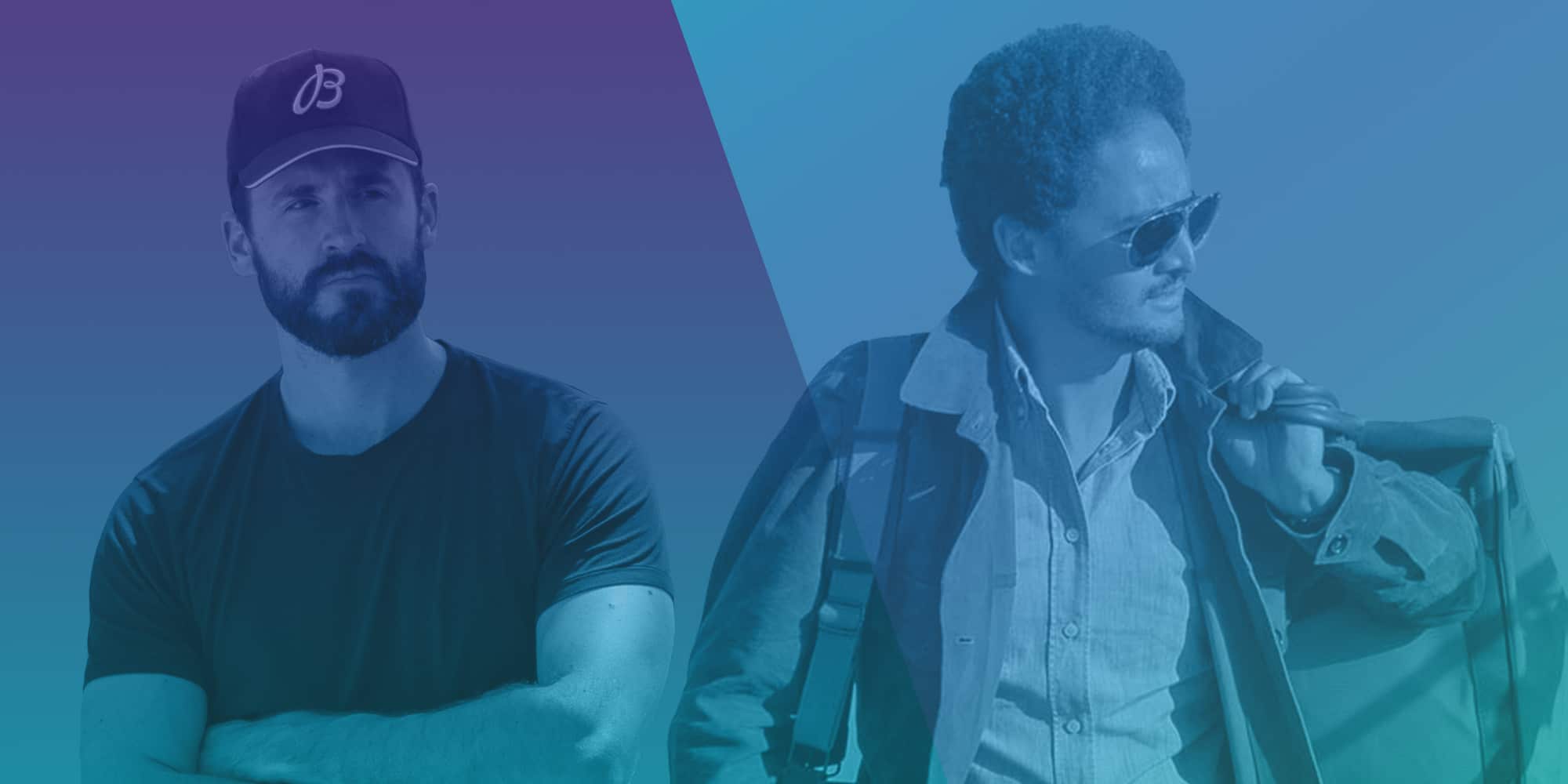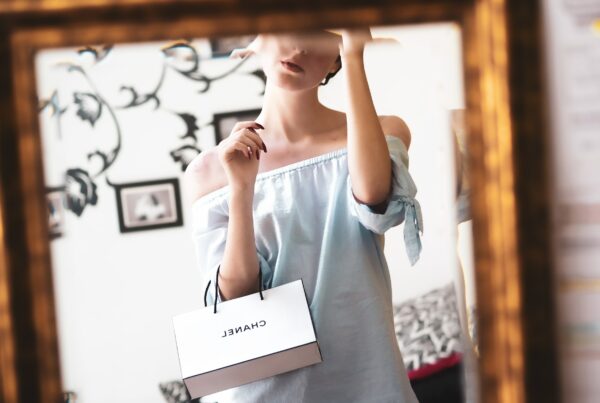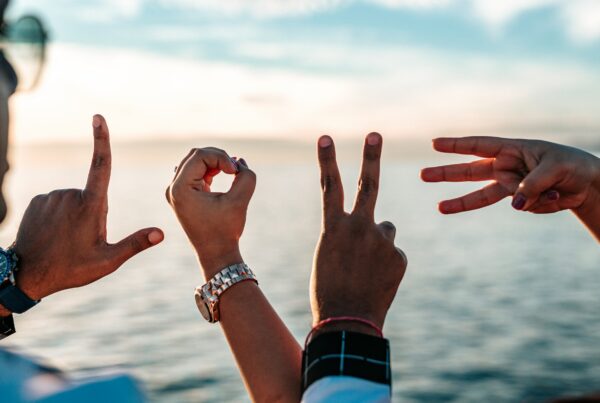DOES TIKTOK WORK FOR LUXURY?
EPISODE 3
TRANSCRIPT
Dom: Hi everyone welcome back to the Sociably podcast, I’m here with Louis, and we’re going to have a quick chat today about TikTok since we haven’t done a podcast on it before.
Louis: No I don’t think we have.
Dom: We might have touched on it in some other bits and pieces we’ve done. So, most people listening to this are at least aware of TikTok now, regardless of whether they’re using it or not. As a brand, you can’t ignore this new platform. You need to be aware of it and you probably need to start thinking about using it. In this podcast, we’re going to run through a few of the pros and cons and some ideas on where we think it’s going, but more specifically how it can be used for luxury brands. Anyone who works in luxury knows that the industry is normally pretty slow to pick up on new technology, or digital marketing generally. But these things often become a big and important part of most marketing strategies, so the question is: is that going to happen with TikTok or not? What are your initial thoughts Louis – when did you become aware of it and what’s your journey so far with the platform?
Louis: We were like: OK there is this app that we can’t really ignore, as it’s potentially going to be big. We thought: let’s check it out, run some tests to see how it works and play around with it. We started launching a couple of accounts at this time.
Dom: That’s where we’re a bit different to other agencies. We like to practise what we preach, trying platforms out for ourselves and seeing whether they work or not – that method goes way back to the launch of Instagram and other similar platforms. It only made sense that we do the same with TikTok.
Louis: Yes – we’re not going to push a platform or new form of marketing to a client without knowing what we’re talking about. So that was our approach. Test this app with portrait format video and short, raw clips – definitely something where well edited and well shot like on Instagram won’t work. The audience is also a much younger generation and demographic. So crucially, how do we talk about luxury on a platform like TikTok?
Dom: The upsides for TikTok at the moment are: it’s a very visual platform and there are a lot of people using it, that’s undeniable.
Louis: Yes and again, you can’t ignore it. Even the luxury brands or fashion brands are starting to use it. We’ve seen over the last couple of weeks brands such as Ralph Lauren doing video challenges or using big TikTok influencers; Gucci recently ran a hashtag challenge. So many brands are starting to wake up and utilise the platform to talk to a much younger audience – educating them about the brand to then potentially convert them into buyers later on.
For example if you take a £10,000 or £15,000 watch – maybe Instagram seems like a better platform to market such a product because you can make more creative, well-edited content that resonates with the right influencers, and talks to the right customer demographic of 35-40 year olds or 25-30 year olds who might be looking to buy their first nice watch… TikTok is less about that. My feeling, playing around with it, is yes, it’s a younger demographic but as a luxury brand you’ll still want to start using it. The TikTok Generation Z audience will be your next buyer of luxury items. And you want to be the brand that, when their parents buy them their first watch for their 21st or for their first job, or when they get to their 30s and they want a nice watch, you’re the brand they want. You need to educate them now about your product and who you are as a brand, and what your values are.
We had a similar conversation with probably the most famous car brand in the world and they told us why they started quite late running influencer marketing strategies: despite people thinking they don’t need to run such strategies since they’re so established as a brand (they’re amongst the top 5 brands in the world), they need to start talking in the right way that communicates to this new audience. The way this new audience communicates is through social apps and digital, like Instagram and TikTok.
Dom: Luxury has never been about building brand awareness today to sell something tomorrow; it’s a long, long journey.
We’ll talk more about the downsides in a moment in terms of the analytics but right now, TikTok is not providing detailed demographic data – you can see the split of male/female and geographically where people are but you can’t see the age groups. It’s probably because they know many people say everyone using TikTok is a teenager (although having worked on the platform for the last 6 months I’d say that’s changing). Even if people are 15 or 16, ten years down the line… that length of storytelling is what most luxury brands are looking at achieving: when those 15/16 year olds are 25 or 30 and in a position to buy the entry level piece, if we’re going back to watches. Now is the time to start talking to them.
But it’s about finding the way to talk to them that’s not going to have a negative reaction because there is a lot of this ‘boomer’ thing on TikTok. So if you’re a more mature and established luxury brand, how do you put content out that is on brand but is still relatable without it looking like you’re just throwing content out there that’s completely ‘off’ for you just to try and engage? There’s a fair bit of dancing and lip-syncing videos on TikTok – that kind of content isn’t a natural fit for luxury brands. So how do you approach it?
We’ve been testing different types of content and seeing what works. For car brands, we’ve seen there’s a lot of stuff that really does engage well without being off-brand.
Louis: That can be the struggle for luxury brands: how do you produce content on a daily basis (you should be posting 2-3 times per day in order to grow your platforms) in an engaging way whilst still adhering to your brand values and sending the right message? This is what’s challenging many brands, and why many need to outsource and seek help from marketing agencies, to have the balance of quality and quantity so you stand out on a platform like TikTok.
Dom: You do have to post 2-3 times per day, which is a massive ask. And with TikTok we’re not talking about stills/images either – this is vertical video content.
Louis: We’ve seen case studies on this too. We met with the TikTok team in London and they showed us some campaigns run in China for a major luxury brand, and around Christmas time they repurposed video content that looked like it was meant for a TV ad campaign. They just re-formatted it to portrait and put it on TikTok.
Dom: Yes, it cut through people’s faces – really lazy.
Louis: It just doesn’t work. It’s the wrong way to do it. It looks obvious on the platform when that’s been done, and doesn’t look organic at all.
Dom: On TikTok you can run a pre-roll; so when you open up the app you can run an ad there (just like a pre-roll on YouTube or sponsored posts in the feed on Instagram). That’s where many brands are able to dip their toe in the water and run ads without committing to opening an account. But we see quite a lot of ads that are just repurposed, and not giving the platform the chance it deserves. Ralph Lauren on the other hand have done it properly.
Louis: Yes, you can see they respect what the channel is about. It’s still well-shot, but it’s done in a raw way.
Dom: They’ve downgraded high-end production to look like it was shot on a phone. They’ve embraced the dancing element too, which is huge on TikTok. They’ve used influencers who are big in the dance space and brought that all together to create a campaign that makes sense for the platform. It’s clearly bespoke for TikTok.
Louis: Not to talk too much about Ralph Lauren but it was a brand that was really strong, but over the last few years it struggled to adapt and keep things fresh. Even though they were strong in terms of creating a lifestyle around the brand, they haven’t really managed to evolve. But using TikTok and embracing the platform by doing content the right way has given a freshness to the brand that it needs.
Dom: They’ve used a collection with pop colours too that will work – it’s really visual which the TikTok algorithm picks up on. The algorithm preferences to content that’s lit well and clean. There are many nuances in working with the algorithm, which has been interesting for us to learn when collecting data. There’s another big opportunity too: major luxury brands will obviously be looking at TikTok and wondering when to use it and start to test it, but if you’re a small to medium size brand, there’s opportunity there.
Louis: If I was a young brand just launching on social media, I would personally try and nail it on TikTok first and build an audience there whilst still having a presence on Instagram. I’d then link back from TikTok to the Instagram channel to send the TikTok audience there; not in every single post but starting with the bio and then in a few posts. For example, in a post on TikTok I’d write “watch the full edit and the outcome of this shoot on our Instagram channel”, and drive a new audience to the Instagram platform too. It’s about playing with your traffic to see what works.
Dom: TikTok have done a good job of making content shareable too. It gives you the option to share it not just across TikTok but on WhatsApp, on Instagram… everywhere. As a young brand, if you manage to build a big audience on TikTok creating viral, engaging content that is being shared across other social platforms, you’ll automatically build a following elsewhere.
But there are some downsides… from an influencer point of view, not being able to swipe up to visit a site, for example – that’s an important KPI for some brands on their campaigns. It’s things like this that might limit some influencer marketing campaigns right now. Or if a brand doesn’t have a TikTok page so you can’t mention them in a post, that limits virality. That’s probably going to change as more and more brands take the plunge and start an account on TikTok. But it’ll be interesting to see how that works practically, and how those brands grow; just because you’re a well-known brand it doesn’t mean you’ll grow a huge audience on TikTok. It’s not a given like it was on Instagram.
Louis: Also some people think: I already follow you on Instagram, so why would I follow you on TikTok? As a brand, you need to – just like with YouTube – offer something different. Maybe sharing more behind-the-scenes, or how the product is made, from a raw and live perspective and less polished way than on Instagram.
Dom: We’ve gotten over half a million followers now on test accounts we’ve started.
Louis: Yes, testing luxury because that’s what we know. Travel, watches, cars and moving into fashion. We now have a case study for a major car brand where some videos – showing the launch of a new car or the car interior, whilst still focusing on lifestyle – got over 10 million views on one video.
Dom: We’ll dig a bit deeper into that in a different podcast.
Louis: Yes, a full podcast about how we managed to get that video to go viral, and how we created the content. The great thing is that you can’t predict if it will go viral – sometimes you think a video definitely has all the ingredients to go viral and it doesn’t. Sometimes you’re surprised by a video doing better than you expected. That’s why our plan has been to experience the platform and work with it on a day-to-day basis, posting 2-3 times per day across several channels that we own, to see what engages and how to create the best content for each product or brand. Now we know how to grow a TikTok page from zero to over 10,000 followers in just one week.
Dom: Good to chat as always. We’ll be back soon with our next podcast. If you’ve any questions, leave them in the comments and thanks for listening.
Go to home page or view case studies.



